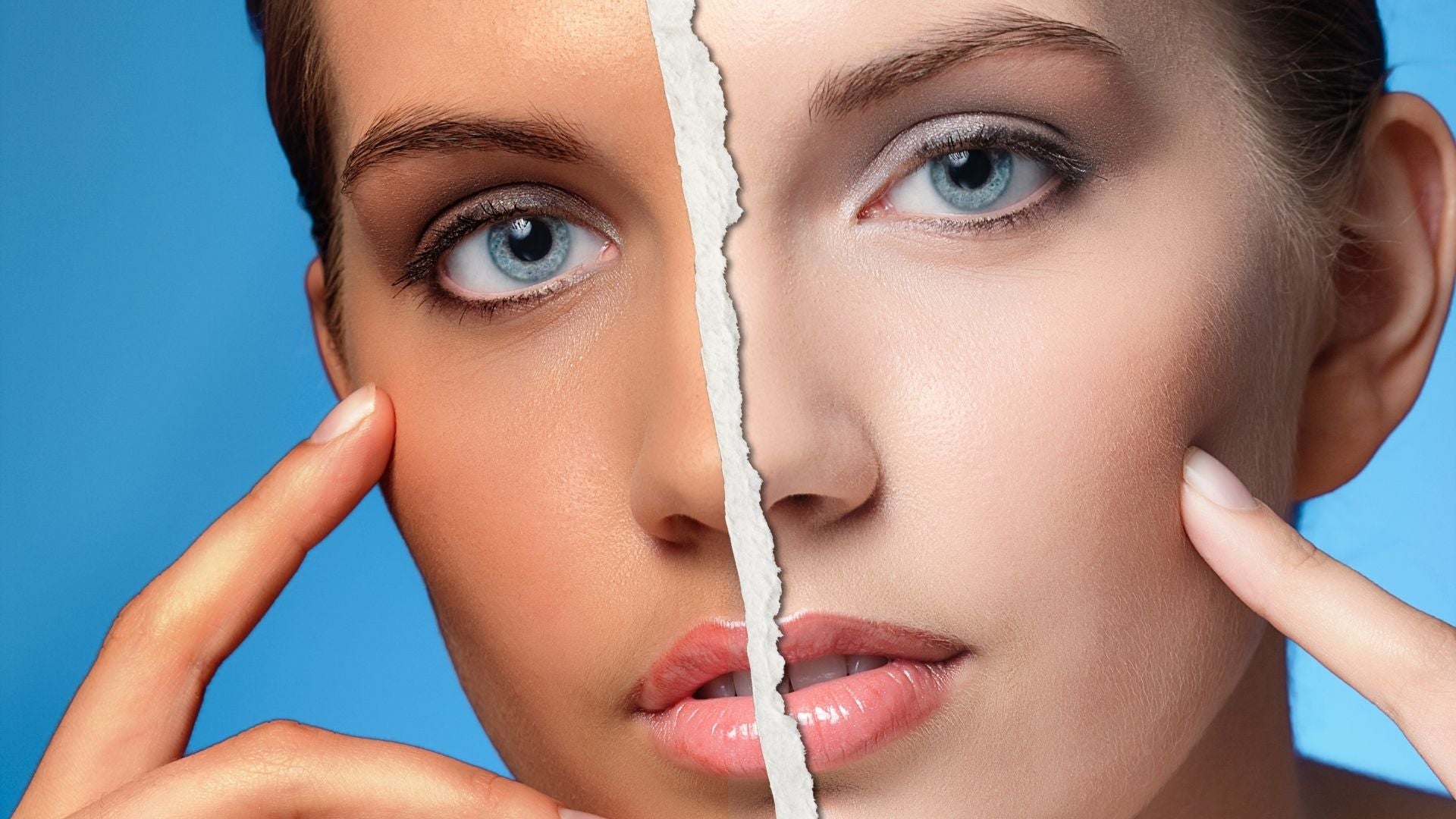
If you’re an avid user or consumer of social media, chances are, you’ve seen loads of different beauty and skincare tips and trends going around. From home remedies for acne and blackheads, to DIY scrubs and exfoliators, platforms like TikTok are awash with advice from influencers (or “skinfluencers” as they are known in this space). However, not all hacks are effective - let alone safe!
There are two TikTok videos in particular that have been going viral for the past few summers. They are practices that not only peddle myth and misinformation, but have the potential to be very dangerous and damaging to your skin. One is SPF contouring, the other is nasal spray tanning.
With all the experience and expert knowledge we now have regarding the very real risks of suntanning (such as skin cancer and premature ageing), it’s concerning to see these so-called “naturally snatched” looks doing the rounds again and again online. As the saying goes, there’s no such thing as a healthy tan.
It’s even more worrying when you combine factors, such as Beyonce’s makeup artist being one of the biggest promoters for sunscreen contouring, and that over 60% of all TikTok users worldwide are female and between the highly impressionable ages of 10 and 29.
So, keep reading to learn exactly what these toxic suntanning trends are and why you should avoid them at all costs…
SPF Contouring
What is it?
SPF contouring (aka sunscreen contouring) involves applying sunscreen to specific areas of the body to get tan lines that create a contour and highlight effect. The most common places to contour and features to accentuate are the cheekbones, jawline, sides of the nose, hairline, abdomen, collarbones and cleavage.
To achieve this look sans make-up, influencers have been using sunscreens of varying SPF (Sun Protection Factor) levels. For example, an SPF 15 or 20 on the spots you want to tan, and SPF 30 or 50 on the areas where you want your colouring to remain as is.
Why is it bad?
At first glance, this technique presents itself as a healthier version of laying out bare and burning in the sun. Devotees encourage viewers to apply sunscreen - which is great - however, they’re targeted with their usage and inconsistent with their messaging.
Recent research has shown that mixing different SPFs or sunscreen types may render them less effective against UV rays, both UVA and UVB. It’s also naïve to think you can control how and where the sun’s ray will focus, so uneven burns or a patchy tan is more likely to be the outcome.
Remember too - a tan is a sign that your skin cells are in distress, even after it fades!
What is a safe alternative?
The most obvious answer is make-up. Bronzers and highlighters will create the same effect, and with better results, because you can select exactly where and how much contouring you want. The sun isn’t going to blend your face for you, and nor should it.
And as a base for your face, a light, tinted moisturiser works well and is gentle on the skin.

Nasal Spray Tanning
What is it?
Another irresponsible TikTok trend going around is tanning nasal sprays. Influencers who used decongestant sprays containing the synthetic chemical melanotan, have sworn that going outdoors or using an ultraviolet sunbed afterwards has “activated” the ingredient to produce a healthy, sun-kissed glow.
Why is it bad?
Melanotan (not to be confused with the brain’s sleep-inducing hormone, melatonin) mimics the actions of the melanocyte-stimulating hormone, which is naturally occurring in the body and increases the production of skin-darkening pigments. Products that contain it, however, are not approved by the TGA (Therapeutic Goods Administration) here in Australia, or the FDA (Food and Drug Administration) in the United States.
Usage can lead to the skin’s melanocytes becoming overactive, and this can cause unsightly moles, blisters and burns, and even nasty melanomas, as well as possible side effects such as nausea, vomiting, headaches and dizziness.
For this reason alone, this is a social media method to steer well clear of, plus the fact that it endorses the use of hazardous solariums.
What is a safe alternative?
As previously mentioned, getting a tan via natural sun exposure or artificial sunlight is incredibly dangerous. Even if you brown rather than burn, the damage has already been done.
Still have your heart set on debuting a bronzed body this summer? Go down the non-toxic route and choose fake tan products, such as lotions, sprays and mousses. You can get instant, temporary tan varieties, or gradual tanners designed to create a subtle, natural glow that is built up over a number of days (the best way to avoid streaky orange shins!).
Or if you’re new to the self-tan game, professional applications can be done in spray tan booths and salons too.


Comments (0)
Back to Blog